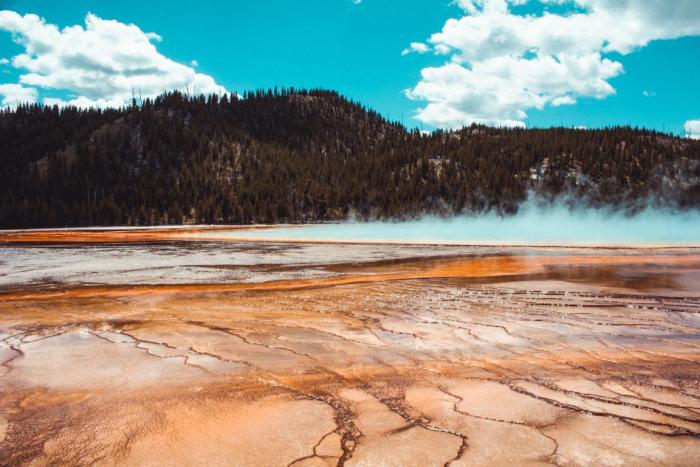
Details
Solution type
Topical area
Geothermal heat comes from the heat retained within the Earth since the original formation of the planet, from the radioactive decay of minerals, and from solar energy absorbed at the surface. This is considered a renewable energy source since the energy stored within the crust of the Earth is so massive that human activity and utilization of geothermal heat will not measurably affect the planet.
Geothermal energy can both refer to shallow geothermal using ground source heat pumps (GSHP) and deeper geothermal, which provides temperatures high enough for conventional DH.
Although volcanic areas provide the highest energy densities and temperatures, certain geological structures make geothermal heat feasible in many other areas, resulting in 160 operational projects in 14 of the EU member states, and hundreds more under development. The reason to go deep is simple: depending on the location, the average temperature increases roughly 2.5-3 degrees every 100 meters, so a suitable aquifer at 2 km depth may already provide a temperature of 50-70°C, first and second-generation DH temperatures being reached at greater depths.
Source
Geothermal sources tap into the heat present in the earth's crust. Although the top dozen meter of soil still feels the influence of solar heat (and the summer/winter cycle), at greater depths the geothermal flux, the heat conducted outward from greater depths plays the primary role. This heat flux originates for about 80% from radioactive decay in the mantle (3.000 km deep), and about 20% from the cooldown of the planetary core below. Although geologically active areas result in a strong local flux increase and corresponding available thermal power, conduction in many other areas is sufficient for DH use.
Technology
The most common type of deep geothermal well is hydrothermal. This requires a suitable (sufficiently permeable) aquifer at sufficient depth, tapped into by two (or more) spatially separated boreholes. The brine in the aquifer is pumped up at an extraction well to provide heat, and after cooling down injected back in a separate well. To avoid both contamination of the well and increased corrosion of the DH network pipes, the heat is transferred to the DH network at the surface using a heat exchanger.
Drilling a geothermal well is technically similar to oil and gas drilling. Compared to single thermal wells (borehole extraction) used in solid rock, the effective volume of rock utilised for extraction in hydrothermal systems is significantly larger, and these are therefore able to provide significantly more thermal power.
The extraction rate and therefore available thermal power can be regulated. However, as the thermal energy extracted is heat-in-place (HIP), care should be taken to balance the overall extraction rates with the local geothermal flux. If not, cumulative cool-down will after a few decades be strong enough to drop output below the required temperature, which in turn will require a lengthy well recovery period of three to five times the extraction period.
For truly long-term geothermal supply it may therefore be interesting to combine a deep geothermal well with a solar thermal field, which would allow accelerated recuperation during the summer months, or use a number of wells and leapfrog between them, using a single active well while the others are allowed to recuperate.
Finance
If temperatures are sufficiently high, geothermal heat may be used to generate electricity. Combining a geothermal well with a thermal store allows heat extraction based on electricity price rather than thermal demand.
Because the exact local geological conditions are difficult to pinpoint and might negatively affect the resulting thermal yield, there is some risk involved in initiating a deep geothermal project. In the Netherlands, an annually replenished guarantee fund exists that reduces this financial risk coming from a failed borehole, the "RNES Aardwarmte". If the thermal yield of a newly drilled borehole insured by the fund is well below the expected value, a second drilling will be financed by the fund.
Gothenburg, Sweden
Project Name
2019 - 2022
External links:
- Geothermal ERA-NET, an FP7 project aimed at strengthening coordination and cooperation between national geothermal research programmes in Europe.
- Developing Geothermal Heat Pumps in Smart Cities and Communities - Final report of the EU project ReGeoCities, focusing on shallow geothermal energy.
- Netherlands Enterprise Agency
Replicability |
Low |
Medium |
High |
|---|---|---|---|
| Authorizative easiness | x | ||
| Adaptability to different climate conditions | x | ||
| Technology easy-to-implement (No needs of specific technical requirements) | x | ||
| Easy-to-implement (No needs of specific technical requirements) | x | ||
| Easy-to-operate (No needs of specific technical requirements) | x | ||
| Opportunity of integrating waste energy sources | x | ||
| CAPEX needed for the deployment of the solution | x |
